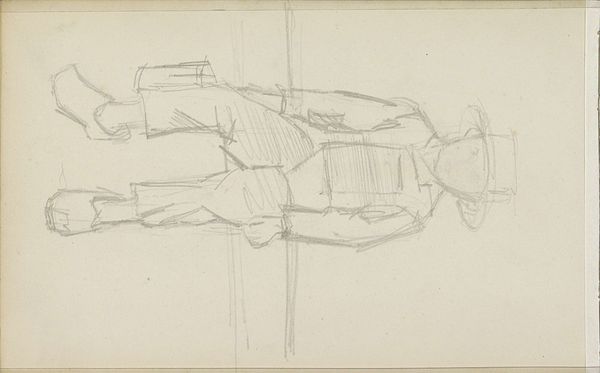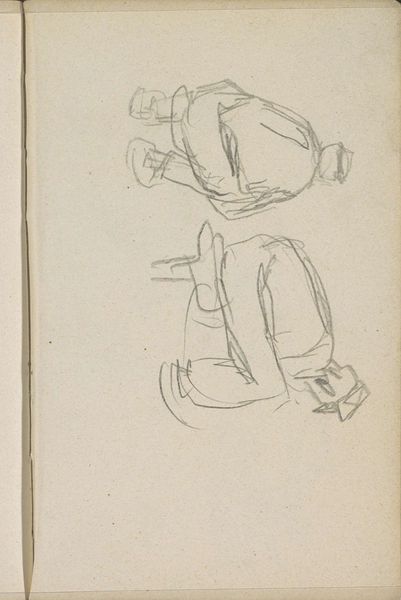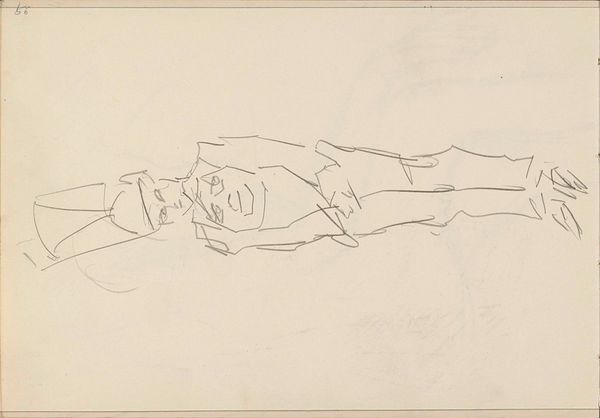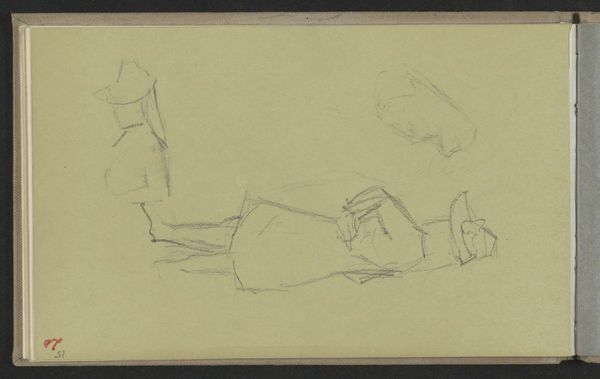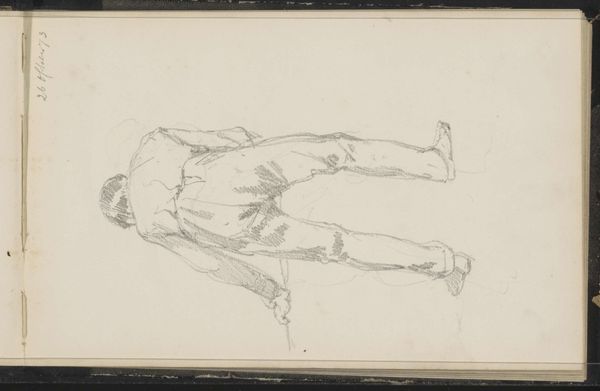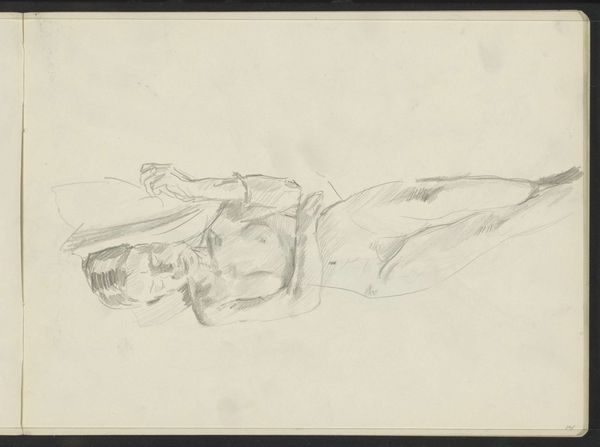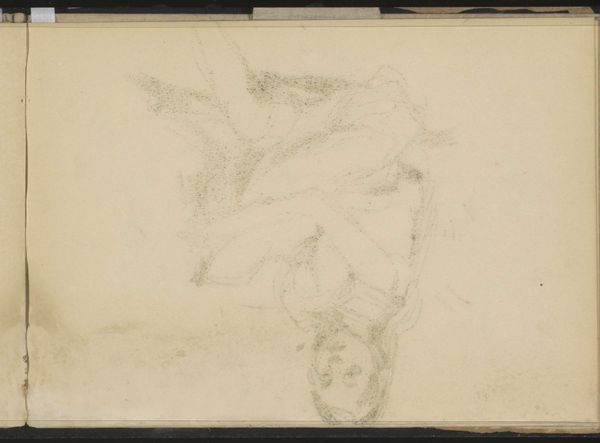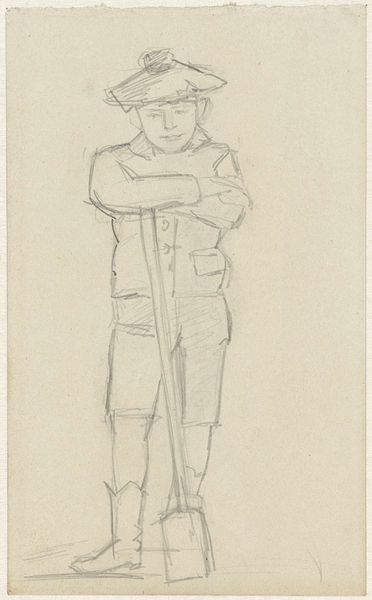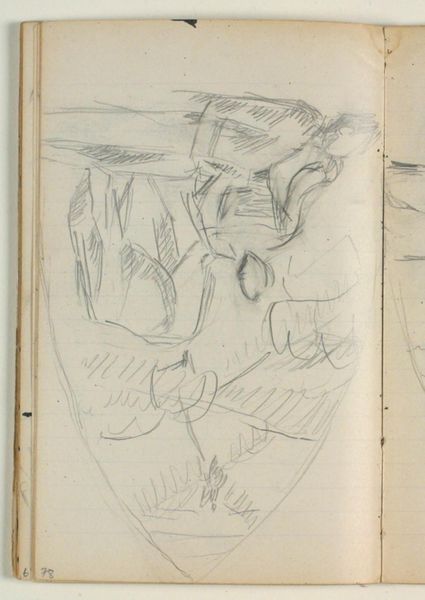
drawing, paper, pencil
#
portrait
#
drawing
#
light pencil work
#
dutch-golden-age
#
impressionism
#
sketch book
#
incomplete sketchy
#
paper
#
personal sketchbook
#
idea generation sketch
#
sketchwork
#
character sketch
#
pencil
#
sketchbook drawing
#
storyboard and sketchbook work
#
sketchbook art
#
realism
Copyright: Rijks Museum: Open Domain
Editor: Here we have Jozef Israëls's "Lezende vrouw aan een tafel," made sometime between 1834 and 1911. It’s a pencil drawing on paper, currently held in the Rijksmuseum. I’m struck by the intimacy of it; it feels like a glimpse into the artist's private sketchbook. What catches your eye in terms of its composition? Curator: Indeed, the sketch’s incomplete nature allows us to concentrate on the very structure of representation. Consider the repetition of lines to suggest form. What semiotic functions do you observe? Editor: Well, the repeated lines create a sense of volume and shadow, especially around the figure's head and hands, making her present despite the sketch's unfinished quality. Is that a fair reading? Curator: A pertinent observation. The artist is not necessarily aiming for verisimilitude. The materiality of the pencil on paper, the varying pressure, it creates depth. How does this inform our perception? Editor: I see how the varying pressure emphasizes certain lines and shapes over others, almost guiding our eye around the composition, giving it a kind of rhythm. So it's about the process of creation, too, not just the final image. Curator: Precisely. And we might further investigate the syntax of lines: how each stroke contributes to an overall feeling, even in its perceived incompleteness. There are only tonal and structural articulations; and so where do our readings take us? Editor: Thinking about it formally, it really shifts the focus from *who* she is to *how* she is represented, making it about the artistic process itself. I initially missed that by thinking about what story it tells. Curator: Quite so. By engaging with this formalist lens, we illuminate dimensions of art often occluded by conventional methods. A rich discourse. Editor: Absolutely, seeing it through that structural lens offers a whole new depth! Thanks so much.
Comments
No comments
Be the first to comment and join the conversation on the ultimate creative platform.
